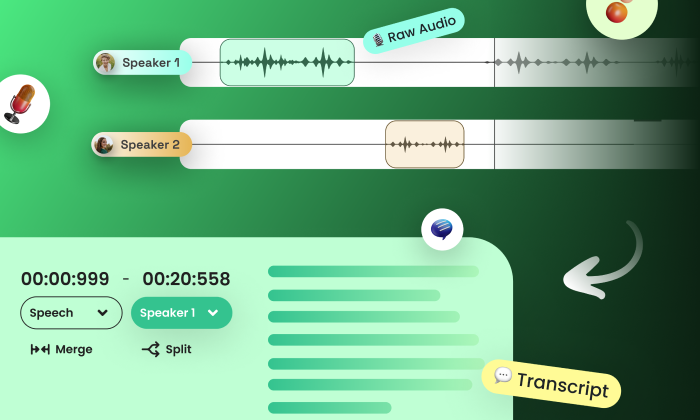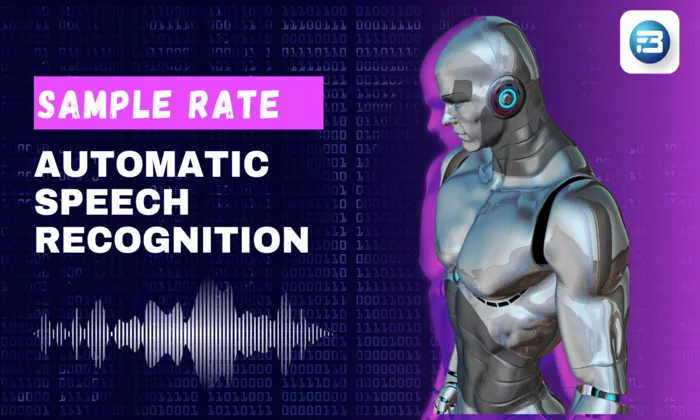Wake word models vs ASR models: what’s the difference?
Speech Recognition
Wake Word
ASR Models
Wake word models and Automatic Speech Recognition (ASR) systems both play pivotal roles in voice AI, but they serve distinct functions. Understanding these differences is crucial for building efficient voice AI systems that respond accurately and promptly to user commands.
TL;DR
- Wake Word Models: Lightweight, low-latency classifiers designed to activate voice assistants using specific phrases.
- ASR Models: Comprehensive systems that transcribe continuous speech into text, enabling complex user interactions.
The Role of Wake Word Models
Wake word models, also known as keyword detection models, are specialized for recognizing specific trigger phrases like "Alexa," "Hey Siri," or "OK Google." Their primary function is to activate the voice assistant, enabling further interaction.
Key Performance Metrics:
- False-Acceptance Rate (FAR): Measures how often the system mistakenly activates in the absence of a valid wake word.
- False-Rejection Rate (FRR): Reflects instances where the wake word is not detected, preventing activation.
Deployment Considerations:
- On-Device vs. Cloud: On-device models prioritize low latency and privacy, whereas cloud-based models offer higher computational power. FutureBeeAI optimizes these models with additional metadata such as speaker demographics and noise tags, ensuring high performance even in noisy environments.
Data & QA Pipeline:
At FutureBeeAI, we utilize the YUGO platform to maintain data quality through a two-layer QA process. Guided re-recordings and comprehensive annotation guidelines, including transcription conventions and speaker ID tagging, are integral to enhancing ASR training.
What Are Automatic Speech Recognition Models?
ASR models are designed to understand and transcribe a wide range of spoken language. These models allow users to engage in complex dialogues with voice assistants, translating spoken commands into text that the system can act upon.
Key Features:
- Broad Recognition Scope: ASR models handle diverse phrases and multi-turn conversations.
- Contextual Understanding: These models utilize Natural Language Processing (NLP) to interpret context, intent, and speech nuances.
Key Performance Metrics:
- Word-Error Rate (WER): Measures the accuracy of the transcription, reflecting the model’s performance in converting speech to text.
- Real-Time Factor (RTF): Assesses how quickly the system processes speech in real-time, an essential factor for live interactions.
Real-World Applications and Use Cases
- Smart Home Devices: Wake word models trigger commands such as “turn on the lights,” while ASR models process more complex requests like “set the living room lights to 50% brightness.”
- Automotive Voice Control: In cars, wake word models trigger commands like “Hey Mercedes,” and ASR models manage navigation or entertainment functions.
- Mobile Voice Assistants: Smartphones rely on both models to initiate tasks and facilitate multi-step interactions with users.
Challenges and Best Practices
- Noise Robustness: Training models with diverse datasets, including noise samples, helps reduce false activations in noisy environments.
- Accent and Dialect Variation: Incorporating a wide range of accents and dialects ensures a broader user base can interact effectively with the system.
- Continuous Learning: Implementing feedback loops post-deployment can enhance model accuracy over time by adapting to evolving user speech patterns.
How Wake Word and ASR Models Work Together
Wake word models initiate interaction by detecting the trigger phrase. Once the assistant is activated, ASR models take over to transcribe and interpret the user's full command. Together, they enable a seamless, efficient voice interaction experience.
Building a Future-Ready Voice Assistant
FutureBeeAI stands as a reliable partner in developing high-performance wake word and ASR models. Our Wake Word & Command Speech Dataset, available in over 100 languages, supports diverse linguistic and environmental contexts, ensuring robust model performance across various applications.
Moving Forward with FutureBeeAI
For voice AI projects requiring robust, multilingual speech data, consider FutureBeeAI's comprehensive dataset offerings. Our expertise in voice AI datasets ensures that your models are both effective and globally adaptable.
What Else Do People Ask?
Related AI Articles
Browse Matching Datasets
Acquiring high-quality AI datasets has never been easier!!!
Get in touch with our AI data expert now!








